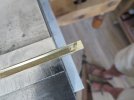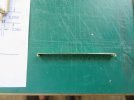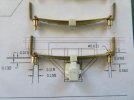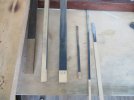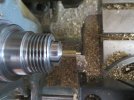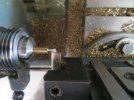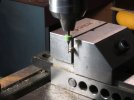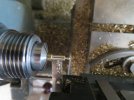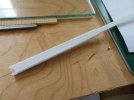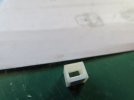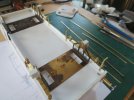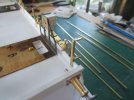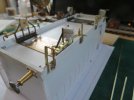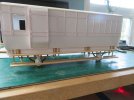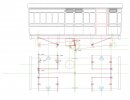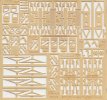Pictures pictures
The sequence for cutting the strips this of course works for any width the key being a zero clearance between the blade and the work in this case the old sled that i have been using for years with all sorts of blades needed a new surface so a scrap of 1/8 (3mm) MDF was tacked onto the surface then the blade brought up enough to cut through.
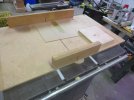
The blade is hollow ground with a flat cut. I just used a pencil to mark the successive cuts, and indexed over the brass each time.
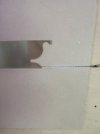
The scrap of plywood is held down with my hand to ensure the the brass doesn't move, (I keep my hand out of the blades path)

After the cut, you can see that the scrap eventually gets used enough that one need to get a new piece. they are only a venner or two deep so the wood can still be used for some other use.
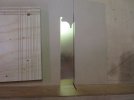
A close up of how high the blade is.
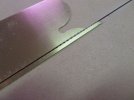
then a few strokes with the sanding stick
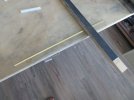
ready to start bending.
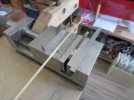
holding the strip with a bit of tool steel (anything hard would do)
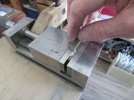
Bringing the other bit of steel up to the pin to start bending

finishing leaving enough space for the side cutters to get close to snip off the excess.
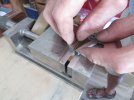
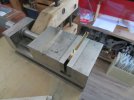
I used trial and error method to guess the correct amount to leave using David Jenkinson"s Mark 1 eyeball method/
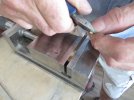
The ends look equal the next step is closing the loop.
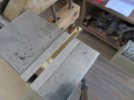
Using finger pressure to hold the strip in place I used the parallel pliers to close the loop.
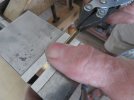
Gently squeezing and rotating the pliers, it is not a perfect method but works well enough for my purposes.

flip it end for end and repeat.

Ok so I have run out of space will complete in the next sequence.
Michael

















